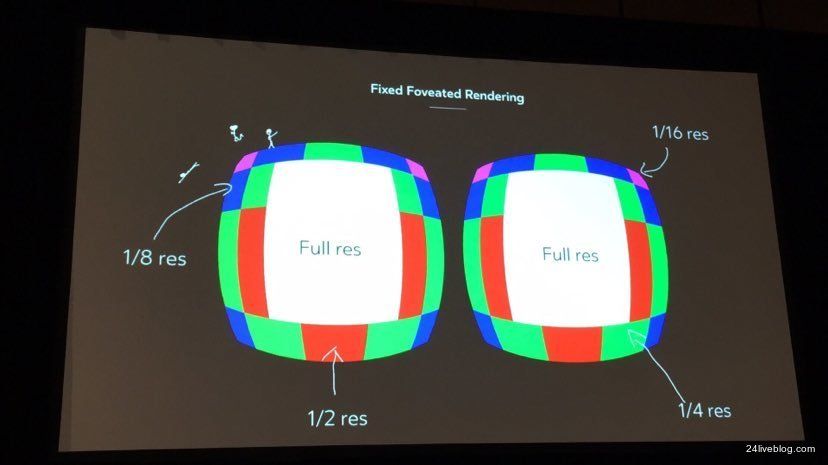During the GDC session “Inside Oculus 2018”, which was explicitly aimed at developers, Oculus’ hardware team revealed a little more about the upcoming go-glasses. The stand-alone device can be controlled with 72 Hz instead of – like Samsung Gear VR – with 60 Hz. That provides latently smoother images and reduces the risk of VR nausea. The gold standard is currently 90 Hz.
More interesting is a new rendering method called “Fixed Foveated Rendering” by Oculus. In this case, the focus point of the spectacle wearer is estimated at the center of the display. Based on this estimate, the resolution is then gradually reduced towards the edges. That should save performance and, according to Oculus’, enable significantly better graphics. The wearer should not notice the lower resolution in the periphery.
Whether the rendering process will also be available for Samsung Gear VR or Oculus Rift is not known. According to Oculus, it was “built into Oculus Go.”
Santa Cruz is to become a game console
Oculus was stingy with news about the self-sufficient 6DOF prototype Santa Cruz. That may be an indication that the device – as initially announced – will not be on the market until next year and is still in the middle of construction.
The prototype shown at GDC will not differ from that demonstrated at the Oculus Connect 4 developer conference in October 2017. Interestingly, the design of Santa Cruz’s 6DOF controllers is closer to that of Oculus Touch. The input devices now look almost identical – possibly to make them more compatible with Oculus Rift.
Oculus could try to connect Santa Cruz to the Rift ecosystem, similar to Oculus Go with Gear VR. That would have the charm that the standalone glasses with plenty of software in the back would come onto the market and would, therefore, be much more attractive for newcomers.
According to Oculus’ developer boss Chris Pruett, Santa Cruz should be “made for games” and “placed on the market like a VR console.” First developer kits have already been shipped, more will follow in the course of the summer.
